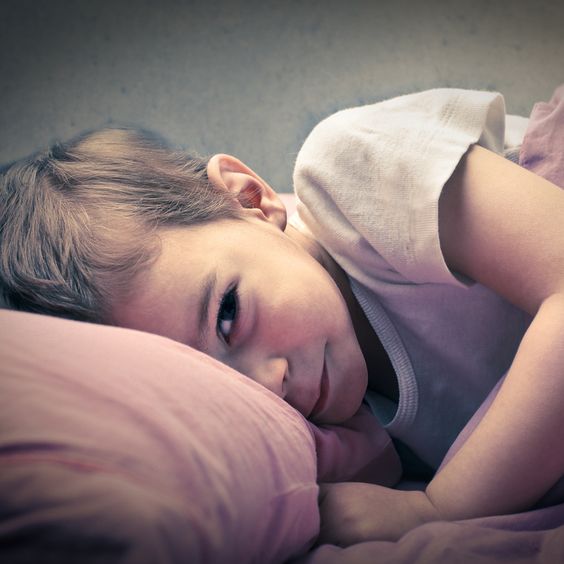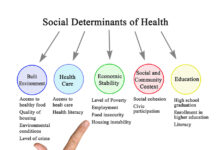A recent reexamination of previous meta-analytic data finds that instances of “pediatric bipolar disorder” (PBD) are substantially lower than claimed. This study, published in Child and Adolescent Mental Health, highlights the numerous methodological issues behind a widely-cited meta-analysis.
“PBD [pediatric bipolar disorder] proved to be controversial because it led to many US prepubertal children with significant internalising and externalising symptoms being reconceptualised as having a severe adult mental illness requiring lifelong medication often using complex polypharmacy with drugs that have not been fully trialed for children,” the study authors write.

Until the late 1990s, the onset of mania was understood to occur almost always in late adolescence or young adulthood. In 1995, two articles were published introducing PBD and applying the bipolar diagnosis to children. This marked a “significant departure from the traditional concept of mania.” Almost 10 years later, this was being implemented as common clinical practice, but not without considerable controversy.
“In most other nations the pre-pubertal onset of classic bipolar disorder continued to be seen as exceedingly rare.”
Parry and a team of researchers in Australia sought to expand on criticisms of a highly-cited meta-analysis published by Van Meter, Moreira, and Youngstrom in 2011 which claimed to have found data supporting PBD across 12 epidemiological surveys. This meta-analysis suggested that PBD was going underdiagnosed and undermedicated in children and in non-US countries, arguing that the prevalence of PBD was 1.8% across children and adults alike.
A previous critique found that these surveys featured information on adolescents rather than pre-pubertal children, combined parent and youth data despite disagreements, and did not include follow-up data to either validate or invalidate a bipolar spectrum disorder diagnosis.
In their reexamination of the 12 epidemiological studies, the researchers found heterogeneous methodologies employed across a number of dimensions. Consistent with the previous critique, the ages of participants reflected an adolescent, not prepubertal sample. Instruments used across surveys were inconsistent, informants ranged from either parents, children, or both, and the time frames of diagnosis ranged from a singular point in time to a 6-month, 12-month, or lifelong prevalence.
Findings also revealed divergent definitions and conceptualizations of the diagnosis in question. These variations included mania, hypomania, bipolar-I, bipolar-II, bipolar-NOS, bipolar spectrum disorder, cyclothymia or a combination of these.
“Given the heterogeneity of the 12 studies,” write the authors, “it is debatable whether they lend themselves to statistical meta-analysis.” The observed differences across findings do not support the results of the 2011 meta-analysis, and in fact, demonstrate lower rates of PBD.
“A reexamination of the studies that comprise the meta-analysis reveals that rates of bipolar-I in the United States are quite low (0.0%-1.0%) with understandably higher rates for bipolar spectrum (up to 6.7%) depending on how that is defined.”
Rates are even lower outside of the U.S., around 0.0%-0.1%, the researchers report, except in Mexico where rates of mania are estimated around 2.05%.
“The 12 studies suggest that where methodology correlated parent and child reports for agreement, and included impairment criteria, that rates of bipolar-I disorder in children and adolescents were close to zero outside the United States and only slightly higher in the United States, though rates of bipolar spectrum disorder were slightly higher.”
The marked disagreements regarding the diagnostic criteria constituting PBD are similarly evident in practice, the researchers note. For example, in one transatlantic comparison study observing practitioners diagnosing tendencies, U.S. child psychiatrists were significantly more likely to diagnose mania for three out of the four cases in contrast to British child psychiatrists who only diagnosed one case as featuring a manic episode.
The authors conclude by cautioning researchers against espousing PBD based on the findings from this meta-analysis, and from those conducted with a lack of methodological rigor.
“Articles that cite the meta-analysis need to critically examine the original studies.”
****
Parry, P., Allison, S., & Bastiampillai, T. (2017). Measurement Issues: ‘Paediatric bipolar disorder’ rates are lower than claimed–a reexamination of the epidemiological surveys used by a meta‐analysis. Child and Adolescent Mental Health.















This is what happens when you invent “disorders” based on arbitrary or socially constructed “symptoms.” There is no objective way to “diagnose,” so anyone can decide to move the goalposts. Add in the financial incentives to prescribe, and you have a perfect storm for corruption disguised as “medical treatment.”
Report comment
“… you have a perfect storm for corruption disguised as medical care,” bingo, you hit the nail on the head. That’s what “bipolar,” and all the DSM disorders are.
And today’s DSM treatment recommendations for “bipolar,” which call for combining the antidepressants and/or antipsychotics, can create symptoms which appear to the DSM believers to be “depression” or the negative symptoms of “schizophrenia,” via what is actually neuroleptic induced deficit syndrome. And today’s “bipolar” DSM drug cocktail recommendations can also create what appears to the DSM believers to be “mania” or the positive symptoms of “schizophrenia,” via what is actually anticholinergic toxidrome.
And since neither of these psychiatric drug induced syndrome/toxidrome are listed in the DSM, these known psychiatric drug induced illnesses are always misdiagnosed as one of the billable DSM disorders. Out of sight, out of the minds of the “mental health professionals.”
The “bipolar” treatment recommendations should be changed, to something which do not cause symptoms which mimic the negative and positive symptoms of “bipolar” and “schizophrenia.”
But what’s good is that we now have the medical proof that both “bipolar” and “schizophrenia” are iatrogenic illnesses which can be created with the psychiatric drugs, as opposed to “genetic” illnesses.
Report comment
Childhood bi-polar, as all other diagnoses, is nothing but a huge pile of bull feces. This was created for Johnson and Johnson by the psychiatrist Joseph Beiderman. He stated that if they would give him a million dollars he would make sure that childhood bi-polar would become a reality. He got his million dollars and now countless numbers of children are labeled with the insidious diagnosis of bi-polar. What Beiderman did was to pathologize the normal things found in childhood so that the net of big pharma could be spread wider to catch more people. What is so insidious about this is that when people are brought into the system at such an early age they tend to stay in the system, making a lot of money for the drug companies and for psychiatrists. This is absolutely criminal. What is even more insidious is that so many lives are ruined by all of this.
Children are not bi-polar, period.
Report comment
Beiderman belongs in prison being fed bipolar toxins.
So does every other dangerous shrink drugging children for invented “illnesses”/”disorders”.
How much death and disability have these monsters caused as they do the dirty work of abusing children by destroying their normal brain function?
Report comment
Agree. Beiderman belongs in prison but instead he recently was appointed to a prestigious position at some university, I forget which one. He is despicable, to say the least. And he dares to call himself a doctor.
Report comment
Something that doesn’t exist, cannot be rare – it simply doesn’t exist
Report comment
Dr. Demitri Papolos has identified a subtype of what he calls “early onset bipolar.” His subtype is called “fear of harm,” exhibited as fearfulness in nearly all situations and labile affect of the “ruining family dinner every single night” subtype. He realized that antidepressants and antipsychotics were not the answer, so he had the wire mothers bring their disordered boys in for a snort of ketamine. To a one, the boys were relieved of symptoms immediately. When they emerged from the K-snorting chamber (which is not called the K-Hole), they were giddy and talkative, high as kites. http://www.npr.org/sections/health-shots/2013/03/25/174928768/how-an-unlikely-drug-helps-some-children-consumed-by-fear
Report comment
This sound like hogwash. Ketamine was originally used as a large animal tranquilizer. Then, some people began using it as a recreational drug and were breaking into vet clinics to steal the damned drug. I do not think that I would have my kid snorting ketamine if I had kids. And shame on Demitri Papolos for trying to perpetuate the idea that children can be bi-polar.
Report comment
Yeah, I hear you, Stephen, but this Papolos quack runs the “JBRF”…. Yup, the “Juvenile Bipolar Research Foundation”….There’s a link in the NPR story.
Report comment